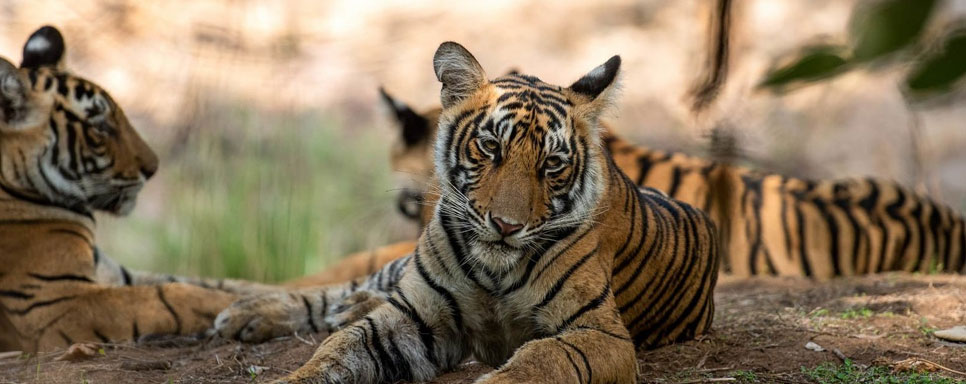Tips to Have the Best Experience at Panna National Park
By JAGAT (06/Feb/25) Panna National Park is a charming location in Madhya Pradesh, ideal for wildlife enthusiasts looking for serene wildlife experiences. One of the major advantages of visiting Panna is its proximity to Khajuraho, a UNESCO World Heritage Site famed for its stunning temple architecture. Panna is located just about 27 km away and offers a perfect blend of history and wilderness, making it an ideal destination for a holistic travel experience.
Among the many ways to explore the park, the jeep safari stands out as the most thrilling and rewarding experience. A pre-booked jeep safari allows visitors to traverse deep into the wilderness, increasing their chances of spotting majestic wildlife such as tigers, leopards, sloth bears, and numerous bird species. To make the most of your visit, careful planning, choosing the right safari zone, and adhering to ethical wildlife tourism practices are essential. This guide will help you optimize your trip and ensure a memorable safari experience at Panna National Park.

Best Time to Visit Panna for an Unforgettable Safari
Timing plays a crucial role in ensuring a fulfilling safari experience at Panna National Park. The park experiences distinct seasonal variations, and each season, especially summers and winters offers a different kind of adventure. October to February is the most comfortable season for visitors, with temperatures ranging between 8°C and 25°C. The cool climate allows for longer exploration hours, and the lush greenery after the monsoon enhances the park’s scenic beauty. Winter is also ideal for birdwatching, as migratory birds flock to the park.
From March to June temperatures can soar above 40°C, but it is the best time for wildlife sightings, especially tigers and other predators. The reduced water sources force animals to congregate around watering holes, providing excellent viewing and photography opportunities.
Safari Zones of Panna
Panna National Park is divided into core and buffer zones, each offering unparalleled wildlife encounters. The main safari zones include:
Core Zones:
• Madla Zone • Hinouta Zone
Buffer Zones:
• Akola Zone • Jinna Zone
Essential Tips for Booking Jeep Safari
To ensure a smooth and rewarding jeep safari experience, keep these essential tips in mind:
Advance Booking: Due to limited availability, it is highly recommended for an advance Panna safari booking either through the official Madhya Pradesh Tourism website or authorized travel agencies. Reliable travel agencies do all the hassles on your behalf and ensure your smooth and seamless experience.
Choosing the Right Time Slot: Morning safaris (6:00 am - 11:30 am) offer the best chance of spotting predators like tigers and leopards. Evening safaris (3:00 pm - 6:00 pm) are ideal for watching animals and enjoying the golden hues of sunset over the forest.
Hiring a Knowledgeable Guide: A well-trained guide or naturalist enhances the safari experience by helping identify wildlife, tracking animal movements, and sharing insightful information about the park’s flora and fauna.
Jeep Safari in Panna - The Ultimate Thrill
Embarking on a jeep safari in Panna National Park is an exhilarating experience that immerses visitors in the heart of the wilderness. As the rugged vehicle navigates through dense forests, open grasslands, and rocky plateaus, the anticipation of spotting a tiger or leopard keeps the excitement levels high. The diversity of the terrain ensures unexpected wildlife encounters, from a herd of spotted deer grazing near a waterhole to a majestic tiger stealthily moving through the undergrowth.
The thrill of a jeep safari lies in its unpredictability - every ride offers a unique experience, and patience is often rewarded with breathtaking sightings. Photographers should keep their cameras ready, as golden sunlight filtering through the trees creates a perfect setting for capturing stunning wildlife moments.
Safari Do’s and Don’ts for a Safe and Enjoyable Experience
Ensuring a responsible and safe safari is vital for both visitors and wildlife. Here are some key guidelines to follow:
Do’s:
• Follow park regulations and respect the natural habitat. • Remain silent to increase the chances of spotting wildlife. • Wear muted colors like green, brown, or grey to blend in with the surroundings. • Carry binoculars and cameras for a better viewing experience. • Stay hydrated and wear comfortable clothing suited to the season.
Don’ts:
• Avoid loud noises; shouting or playing music disturbs wildlife and reduces sighting chances. • Do not feed animals. Human food can be harmful to them. • Never get off the jeep except in designated areas. • Carry all waste back to designated disposal points to refrain from littering.